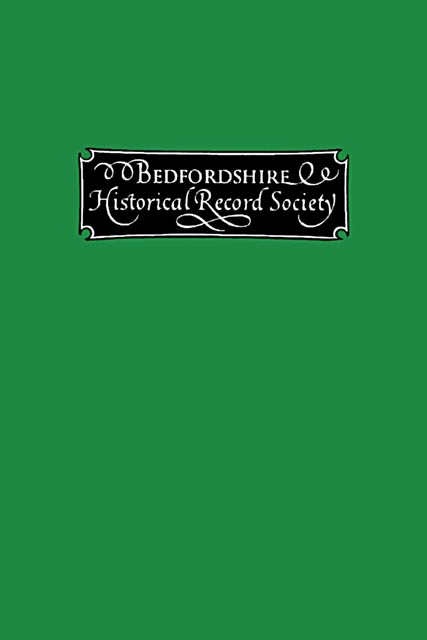Book contents
- Frontmatter
- Contents
- List of Illustrations
- Author’s Preface
- Acknowledgements
- Abbreviations and symbols used in transcription
- Introduction
- Selected Documents
- Bedfordshire Clock and Watchmakers
- Appendix 1 List of Bedfordshire Clock & Watchmakers By Place of Work
- Appendix 2 Clock & Watchmakers in Towns and Villages Adjacent to the County
- Appendix 3 Bedfordshire Clock and Watchmaking Apprentices
- Select Bibliography
- Index
Bedfordshire Clock and Watchmakers
Published online by Cambridge University Press: 05 August 2023
- Frontmatter
- Contents
- List of Illustrations
- Author’s Preface
- Acknowledgements
- Abbreviations and symbols used in transcription
- Introduction
- Selected Documents
- Bedfordshire Clock and Watchmakers
- Appendix 1 List of Bedfordshire Clock & Watchmakers By Place of Work
- Appendix 2 Clock & Watchmakers in Towns and Villages Adjacent to the County
- Appendix 3 Bedfordshire Clock and Watchmaking Apprentices
- Select Bibliography
- Index
Summary
Notes on format of entries
As explained in the preface, this section includes people engaged in the clock and watch trade in Bedfordshire up to and including 1881. People and businesses first mentioned after 1881 (e.g. listed in the 1885 Directory) are excluded.
To ensure consistency, the information given for an individual maker includes (where possible) date and place of birth (or baptism), parentage, apprenticeship or training, relationships to other makers (named in bold), places of work (with dates at given addresses), services advertised (e.g. clock and watchmaker, whitesmith, jeweller, bookseller etc) with dates, brief family details, and date of death. In addition, (a) examples of known clocks and (b) details of turret clock cleaning/repair work are given for each maker.
The headings for individual makers give the full name, with (in brackets on the right-hand side of the page) place(s) of work and working dates. Working dates are given in preference to dates of birth and death etc. partly because this is what will chiefly interest owners of clocks, and partly for simplicity (i.e. to avoid duplicating detailed information given in the text).
Where a family provided a dynasty of makers in a particular place (e.g. the Peppers of Biggleswade) the entries for the individual members of the family engaged in the clock and watch trade appear in alphabetical order preceded by a general note on the family and business. In such cases it is not always possible to determine which member of the family was responsible for a particular clock or paid for work on a church clock, e.g. where the clock or documentation gives the surname only. The additional information (a and b) is therefore given for the whole family rather than for the individual makers.
The information on clocks and watches (a) comes from a variety of sources, but chiefly from the notes of the late T. W. Bagshawe. Some of the clocks noted as being at Luton Museum may have been on temporary loan, and intending viewers are advised to contact the Curator for up-to-date information. Information on turret clocks (b) may be assumed to have come from Churchwardens’ accounts or other records of the given parish unless otherwise stated.
- Type
- Chapter
- Information
- Bedfordshire Clock and Watchmakers 1352-1880A Biographical Dictionary with Selected Documents, pp. 79 - 220Publisher: Boydell & BrewerFirst published in: 2023

